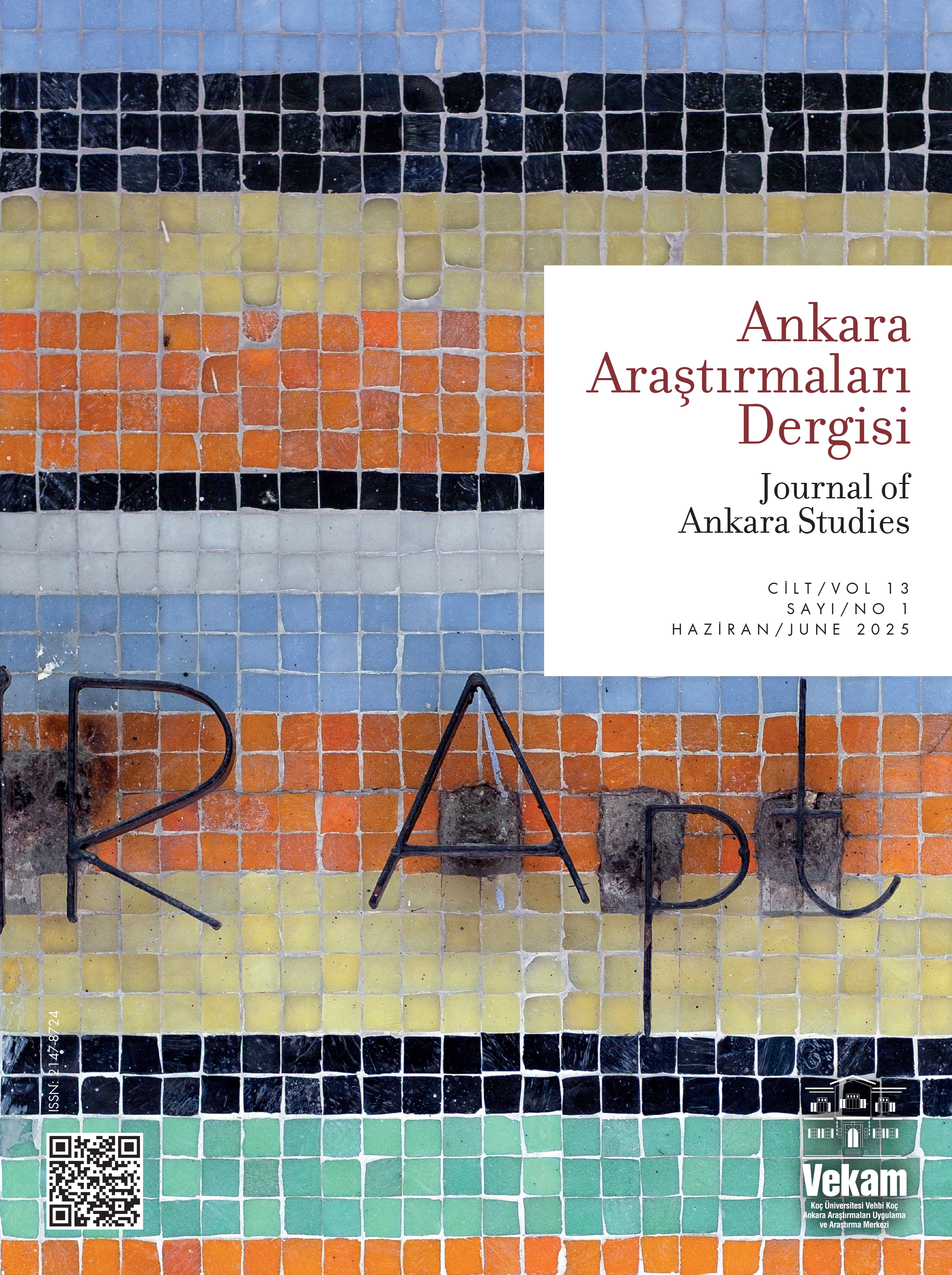The Urban Transformation of Diverse Works: A Critical Framework that Uses Fieldnotes Regarding Çinçin Bağları
Gülşah AykaçMiddle East Technical University, Faculty of Architecture, Department of Architecture, Ankara, TurkeyThis article aims to re-frame an example of urban transformation through the consideration of the collective spatial narratives of second and third-generation urban migrants who are still living in Çinçin Bağları. The method utilized in the research is the interpretation of historical data and collected spatial narratives. During the fieldwork conducted between May 2018 and May-September 2019, autoethnographic mapping and feminist methodologies were used. The research findings can be summarized in the following threefold proposition: (i) The participants’ collective spatial narratives point out that the primary history of the area is one of labor. Çinçin is described as being a district that includes various workers, from undocumented cemetery workers to unpaid houseworkers, from shopkeepers to street vendors, from musicians working in the entertainment industry, to documented workers in different service sectors, from artists and actors to civil servants. (ii) The narratives demonstrate that work represents not only an economic, but also as a socio-spatial institution, and that the workers from a diversity of professions all share the collective claim of “we’ness”, in the sense of “being from Çinçin.” This claim is also evidence of resistance against stigmatization and the erasure of local memories. (iii) The narratives ultimately point to dialectical relationship consisting of historical, non-stationary, multi-actor, and dialectical aspects that exist between work and urban transformation. This interpretive framework draws attention to the fact that the foundational dialectical relationship that historically exists between work and urbanization, and then work and state-led urban transformation, goes beyond a mere consideration of urban rent and housing. Instead, this relationship demonstrates how the transformation reflects the lives of multiple actors in a wide range of professions. This framework leads to the production of a critical ground for proposing labor-centered urban processes, consisting of multiple actors’ urban experiences of diverse works, through the analysis of the distinctive history of places.
Keywords: Work, Work and City, Urban Transformation, Collective Spatial Narrative, Auto-ethnographic mapping, Altındağ, Çinçin Bağları, AnkaraMuhtelif İşlerin Kentsel Dönüşümü: Çinçin Bağları Saha Notları Üzerinden Eleştirel Bir Çerçeve
Gülşah AykaçOrta Doğu Teknik Üniversitesi Mimarlık Fakültesi, Mimarlık Bölümü, Ankara, TürkiyeBu makale, Çinçin Bağları’nda hâlâ yaşamakta olan, kentleşmenin ikinci ve üçüncü kuşak göçmenlerinin kolektif mekânsal anlatılarındaki iş kavramı üzerinden kentsel dönüşümü yeniden çerçevelemeyi amaçlamaktadır. Araştırmanın yöntemi tarihsel veri ile kolektif mekânsal anlatıların yorumlanmasına dayanmaktadır. 2018 yılı Mayıs ayı ve 2019 yılı Mayıs-Eylül ayları arasında gerçekleştirilen saha çalışmasında, oto-etnografik haritalama ve feminist metodolojilerden faydalanılmıştır. Araştırmanın bulguları üçlü bir önerme ile çerçevelenebilir: (i) Katılımcıların kolektif mekânsal anlatıları öncelikle yerin tarihinin, emeğin tarihi olduğuna işaret etmektedir. Çinçin kayıt dışı çalışan mezarlık işçilerinden ücretsiz ev işçilerine, dükkân sahibi esnaftan işportacılara, eğlence sektöründe çalışan müzisyenlerden farklı hizmet sektörlerinde kayıtlı ve sözleşmeli çalışabilen işçilere, sanatçı ve oyunculardan memurlara varan geniş bir yelpazede çok çeşitli işlerin ve işçilerin semti olarak betimlenmektedir. (ii) Anlatılar bu anlamda, işi salt ekonomik değil aynı zamanda sosyomekânsal bir kurum olarak yorumlar ve bu yüzden işlerin çeşitliliği kolektif bir “biz olma,” “Çinçinli olma” iddiası taşımaktadır. Bu iddia, yerin hafızasının silinmesine ve suçla damgalanmaya karşı bir direniş sergilemektedir. (iii) Anlatılar son olarak, iş ile kentin dönüşümü arasında diyalektik —tarihsel, durağan olmayan, çok aktörlü ve çoklu süreçleri kapsayan— bir ilişki olduğuna işaret etmektedir. Önce iş ve kentleşme, daha sonra iş ve devlet kanallı kentsel dönüşüm arasındaki diyalektik ilişkiye dikkat çeken bu yorumsal çerçeve, kentsel dönüşüme kentsel rant ve konut bağlamının ötesinde; dönüşümün muhtelif işlerin çoklu aktörlerinin yaşantısına nasıl yansıdığı üzerinden işaret eder. Bu çerçeve, yerin özgül tarihi analiz edilerek, emek odaklı kentsel süreçler önermek için eleştirel bir zemin inşa edebilir.
Anahtar Kelimeler: İş, İş ve kent, Kentsel dönüşüm, Kolektif mekânsal anlatı, Oto-etnografik haritalama, Altındağ, Çinçin Bağları, AnkaraManuscript Language: Turkish













